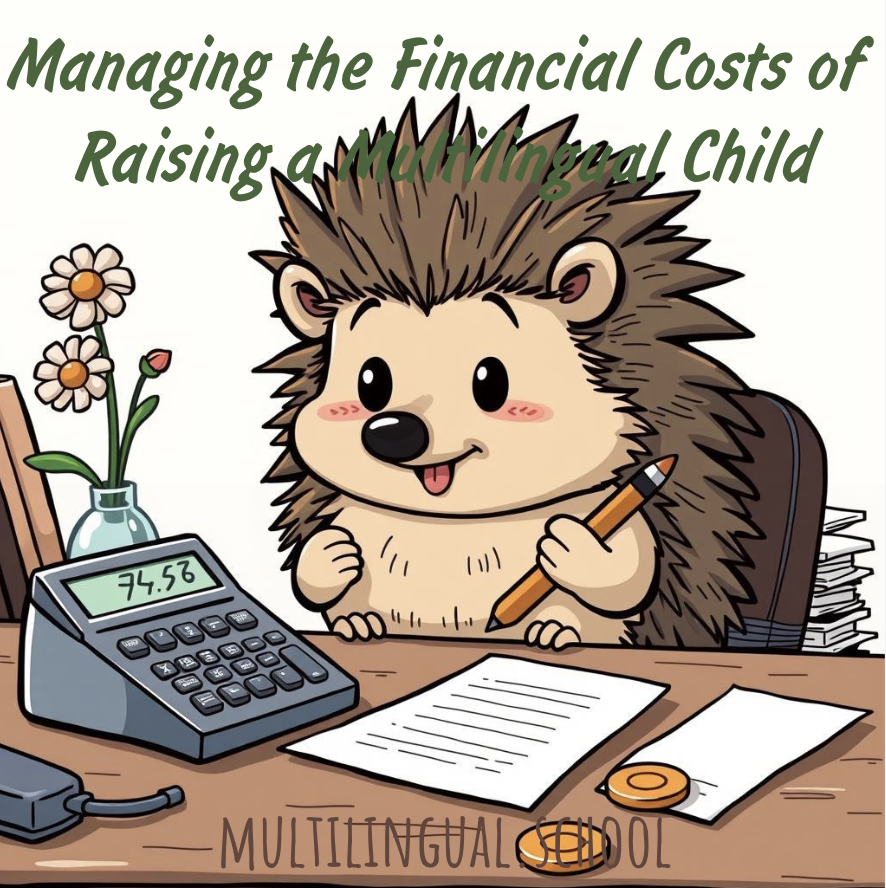Clear, Specific, and Practical Steps to Boost a Lagging Language without Overwhelming the Child
This post may contain affiliate links, which means that I may receive a commission if you make a purchase using these links. You do not pay a higher price.
Initiatives to Boost a Lagging Language in a Natural and Enjoyable Way
We are constantly balancing and re-balancing our language input in German, English, and Portuguese at home. So far, our son is developing his language skills in all three languages nicely. However, Portuguese is certainly the weakest link. Just lately, we spent a week in an all-German context, and afterwards, the preschool English was quite omni-present that Portuguese felt like an afterthought and I could see my son searching for vocabulary in that language.
Every time this happens, I feel a bit shaken and anxious that we might be leaving the language behind, that the gap is growing too wide. It takes some effort on my side to overcome my fear of failing and to look at the situation more positively and realistically.
Language shifts and preferences do happen. So does life, and I can’t change the fact that sometimes one language dominates over the other. It’s neither “failing” nor “losing” the language over a small hiccup in routine.
Yet, it’s time to discuss the options you can take to rebalance a weak language again. So, effectively, what can you do if you feel one language is losing ground?
Increase Daily Exposure in Fun, Routine Ways
Set aside specific times for the lagging language: Pick daily activities like mealtime, bath time, or bedtime stories and use only the target language during those moments. For example, read a bedtime story in that language every night.
Try a “language hour”: Dedicate an hour each day—perhaps after school or during playtime—where all family interactions happen in the lagging language. This could include chatting, playing games, or watching a show together.
Use Media That Matches Your Child’s Interests
Choose engaging content: Pick books, cartoons, or music in the lagging language based on what your child loves. If they’re into superheroes, find a superhero cartoon or book in that language.
Add audiobooks or podcasts: Play stories or fun facts in the background while they play or relax. This passive exposure helps reinforce vocabulary and pronunciation without extra effort.
Make the Language Part of Play
Play games: Use simple games like “Simon Says” or “I Spy” in the lagging language. Even board games can work if you give instructions and chat in that language.
Encourage creativity: Ask your child to act out a scene or tell a story using the lagging language. This makes it fun and builds their confidence.
Tie the Language to Culture
Cook together: Make a traditional dish from a culture tied to the lagging language, using the language to name ingredients and steps. For example, make dumplings while speaking Mandarin.
Celebrate holidays: Mark a cultural event like Diwali (for Hindi) or Bastille Day (for French) with songs, stories, and activities in the target language.
Use Technology for Interactive Learning
Try kid-friendly apps: Apps like Duolingo Kids or Gus on the Go offer games and stories in multiple languages. Spend 10-15 minutes a day on these for fun practice.
Watch interactive videos: Look for YouTube channels or shows with sing-alongs or call-and-response parts to make screen time educational and engaging.
Connect with Native Speakers
Set up playdates or calls: Arrange regular chats with family, friends, or a tutor who speaks the lagging language. A weekly video call with a grandparent can work wonders.
Join community events: Find local cultural groups or online meetups where the language is spoken. Even occasional exposure to native speakers helps.
Travel to the Country of that Language
Visit family back home: If possible and feasible, schedule time “back home” where the lagging language is widely spoken. Immersion into a wide community of native speakers usually gives a huge language boost.
Stay Consistent but Flexible
Build a routine: Use the lagging language regularly, but keep it light. If your child gets frustrated, switch to something fun like a song or game in that language.
Praise effort: Celebrate any attempt to use the language, even if it’s just a word. Positive feedback keeps them motivated.
These steps work because they blend the lagging language into your child’s daily life in a way that’s enjoyable and meaningful. By making it fun and connected to their world, you’re helping them building and maintaining a positive relationship with the language.
It’s normal for one language to lag at times, especially if it’s not the dominant one at home or school. With patience and creativity, you can help your child catch up. Celebrate their progress, stay flexible, and know that your efforts are giving them a valuable skill for life.













